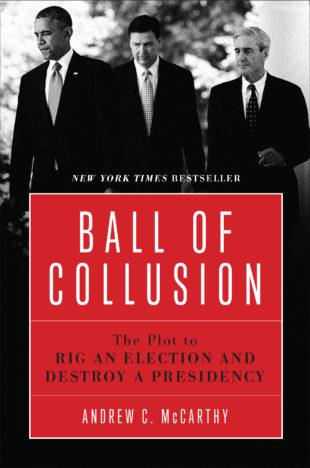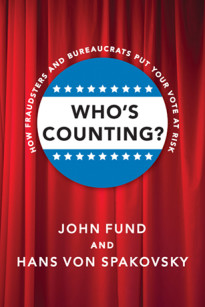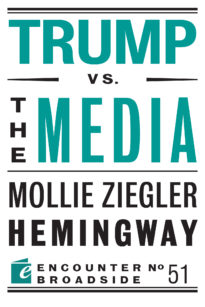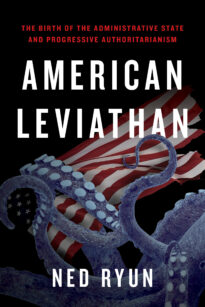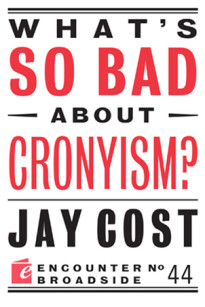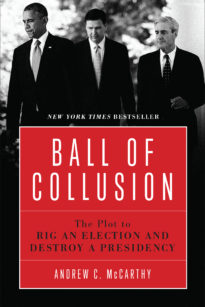This is a story about hubris. Sure, there’s plenty of collusion. But hubris is the more fitting word. This is a story about what happens when those we trust to be the guardians of our system anoint themselves the masters of our system. For our own good, of course.
As for collusion, that word we’ve heard so incessantly from pundits and leaky government officials, Special Counsel Robert Mueller has rendered his judgment that there was none—at least, not the collusion he was hunting for. There really was a collusion plot, though. And it really did target our election system. It absolutely sought to usurp our capacity for self-determination. It was just not the collusion you’ve been told. It was not “Donald Trump’s collusion with Russia.”
Here is the real collusion scheme: in 2016, the incumbent Democratic administration of President Barack Obama put the awesome powers of the United States government’s law-enforcement and intelligence apparatus in the service of the Hillary Rodham Clinton presidential campaign, the Democratic party, and the progressive Beltway establishment. This scheme had two parts: Plan A, the objective; and Plan B, a fail-safe strategy in case Plan A imploded—which all the smartest people were supremely confident would never, ever happen . . . which is why you could bet the ranch that it would.
Plan A was to get Mrs. Clinton elected president of the United States. This required exonerating her, at least ostensibly, from well-founded allegations that were both felonious and politically disqualifying.
Plan B was the insurance policy: An investigation that Donald Trump, in the highly unlikely event he were elected, would be powerless to shut down. An investigation that would simultaneously monitor and taint him. An investigation that internalized Clinton campaign–generated opposition research, limning Trump and his campaign as complicit in Russian espionage. An investigation that would hunt for a crime under the guise of counterintelligence, build an impeachment case under the guise of hunting for a crime, and seek to make Trump un-re-electable under the guise of building an impeachment case.
The Clinton Emails Caper
Upon becoming President Obama’s secretary of state, Clinton improperly set up a private, non-secure system for email communications. It featured her own personal server, stored in her home and, later, maintained by a private contractor headquartered in Colorado. Secretary Clinton used this private email system for all of her official State Department communications, notwithstanding that doing so (a) violated government regulations (which, as the department head, she was responsible for enforcing); (b) violated governmental record-keeping and record-production obligations imposed by federal law; and (c) made it inevitable—due to the nature of her responsibilities—that streams of classified information would flow through and be stored in the non-secure system.
This lack of security meant that top-secret intelligence—some of it classified at the highest levels, some of it involving Clinton’s communications with the President of the United States and other top national-security officials—became accessible to people who were not cleared to see it. Accessible not just to those lacking security clearance, but also to hostile actors, including foreign intelligence services and anti-American hackers.
When asked, nearly two years after leaving office, to surrender copies of her emails (by an Obama State Department under pressure from congressional investigators and Freedom of Information Act claimants), Clinton caused tens of thousands of her emails to be destroyed. Not just deleted. Destroyed. As in: purged with a special software program (“BleachBit”) designed to shred electronic documents. The aim was to prevent their being recovered. Ever. By anyone.
In all, Clinton undertook to destroy over thirty thousand emails, even though some of them had been demanded by congressional subpoena. And this would not be a Clinton story if we failed to note that, in the time-honored family tradition, Hillary lied her head off about the substance of the destroyed emails: claiming that thousands upon thousands of email exchanges in which she—one of the busiest public officials and most obsessively political creatures on the planet—had lolled her days away gabbing about yoga routines, family vacations, and her daughter’s wedding.
The FBI was eventually able to reassemble portions of the tens of thousands of purged emails. “Several thousand,” the FBI’s then-Director James Comey reported, were “work-related,” and at least three of them were classified. We will never have a final count because, in extirpating her correspondence, Clinton and her subordinates took extraordinary measures to defeat forensic investigation. And why not? After all, if you had discussed some earth-shattering development in yoga—perhaps a secret breakthrough in utthita trikonasana!—you wouldn’t just delete that, right? You’d want to make certain that all the king’s horses and all the king’s men—and all the prying FBI agents, the nosy congressional committees, and those ferrets down at Judicial Watch—couldn’t put those emails together again.
Doesn’t everybody BleachBit their deleted emails?
Even the emails Clinton deigned to turn over were rife with classified intelligence. They also contained other government information that, though not classified, is supposed to be kept on the government’s secure system because it is sensitive.
Mrs. Clinton’s misconduct appears to have transgressed several federal criminal laws. Among the most obvious are those making it a felony to mishandle classified information, convert and destroy government records, and obstruct congressional investigations. Plainly, while the classified information offenses are the most egregious, they are not the only crimes—just the only ones we ever heard much about.
Why? It was a brilliant play, really. Clinton-friendly government officials and media spoke only about the classified information in the emails Clinton surrendered. That she massively destroyed records of State Department business, and that the purge occurred after a congressional investigative committee issued a preservation letter and a subpoena, were largely ignored. It was a simple strategy: First, focus obsessively on classified information issues so that other misconduct would fade into trivia and irrelevance; second, find ways to undermine the classified information allegations so that the emails debacle would disappear as a source of potential criminal jeopardy; and finally, maintain that the lack of criminal charges erased Clinton’s national security recklessness and rules-don’t-apply-to-me arrogance as campaign issues.
President Obama took care of undermining any classified information prosecution. He had a deep interest in doing so: he had knowingly communicated with his secretary of state through the private system, and he had misled the public about it—claiming to have learned about Clinton’s private email practices from news reports, like everyone else. All of that could be neatly buried in two steps. First, Obama would invoke executive privilege (without calling it that—too Nixonian) to seal the Obama-Clinton emails from public view. Second, ensure that the Clinton emails case would never be prosecuted: if Clinton was never accused of criminal conduct, then Obama’s role as a minor participant would not become evidence in a criminal case.
In April 2016, on national television, the president made clear that he did not believe an indictment should be filed against former Secretary Clinton, who, by then, was the inevitable Democratic presidential nominee. Obama explained that, in his considered judgment, Clinton meant no harm to national security. Plus, the intelligence involved, though technically categorized as “classified,” was not really, you know, the super-secret stuff—“There’s ‘classified,’” Obama scoffed, “and then there’s classified.” It was a classic Obama straw man. The criminal provisions pertinent to Clinton’s case did not require proof of intent to harm the United States, only that she was trusted with access to intelligence and nevertheless mishandled it, either intentionally or through gross negligence. Moreover, no one was accusing Clinton of trying to damage national security. That is a different, more serious criminal offense that was not on the table. It was as if Obama were claiming that a bank robber was somehow not guilty of the bank robbery because she hadn’t murdered anyone while committing it.
Of course Mrs. Clinton hadn’t set out with a purpose to harm the country. Her purpose, with a 2016 presidential bid in the works, was to conceal her communications as secretary of state from Congress and the public. Hillary Clinton had been under criminal investigation before—indeed, when she was first lady in 1995, she was very nearly indicted for obstruction and making false statements by Independent Counsel Kenneth Starr. Mrs. Clinton knew that leaving a paper trail, especially one that documents conversations, is how shady characters get themselves jammed up with the law.
During her tenure, the State Department had an intriguingly cozy relationship with the Clinton Foundation, the enterprise through which Mrs. Clinton and her husband, former President Bill Clinton, had become fabulously rich by monetizing their outsize political influence. Do you suppose that maybe, just maybe, that could be a better explanation than yoga routines for why, when it came to her stored emails, Clinton decided to scorch the earth and poison the wells?
Several bureaucrats and military officials have been prosecuted and severely disciplined for failing to safeguard the national-defense intelligence to which they are given privileged access. None of them wanted to harm the nation. Lack of malevolent motive was no defense, however, because it formed no part of the offense they were cited for committing. Yet, for the putative Democratic nominee, the Obama administration effectively rewrote the law.
There was no way on God’s green earth that the Obama Justice Department was ever going to authorize a prosecution involving conduct that would embarrass the president. Nor was it ever going to indict Obama’s former secretary of state—certainly not after Obama, revered by Democrats and pundits as a first-rate lawyer, had pronounced her not guilty, had provided a legal rationale for exoneration, and had endorsed her as his successor. There was no way an indictment was going to be approved by Obama’s attorney general, Loretta Lynch—the same Loretta Lynch who rose to prominence when she was appointed to a coveted U.S. attorney post by, yes, President Bill Clinton. The same Loretta Lynch who knew she stood a good chance of remaining attorney general if there were a President Hillary Clinton.
Approve an indictment? Lynch did not even allow the FBI to refer to its probe of Clinton as an investigation. She instructed Comey to describe it as a “matter,” as if the issue were a parking ticket, or maybe a yoga routine. “I guess you’re the Federal Bureau of Matters, now,” a colleague tartly ribbed the director. The Bureau could run down all the, er, matters it wanted (within severe limits imposed by the Justice Department). Hillary Clinton was not going to be charged, period. Lisa Page, an FBI lawyer who worked on the Clinton emails investigation (and who became a notorious figure during the Trump–Russia investigation), told congressional investigators that the Obama Justice Department repeatedly rejected the FBI’s efforts to make a case against Clinton for mishandling classified information.
Wonder of wonders: The “no intent to harm the United States” rationale President Obama had glibly posited in insisting Clinton had done nothing wrong was echoed in the ensuing months by his subordinates. Justice Department officials leaked to their media friends that Clinton was unlikely to be charged because there was scant evidence of intent to harm the United States. Meanwhile, very shortly after Obama’s public statements about Clinton’s case, FBI Director James Comey and his closest advisors began drafting remarks exonerating Mrs. Clinton. Over a dozen critical witnesses, including Clinton herself, had not yet been interviewed. Salient evidence had not yet been examined. No matter. With the end of the story already written, the rest was just details. When Director Comey finally announced that Clinton would not be indicted, his rationalizations were indistinguishable from Obama’s.
